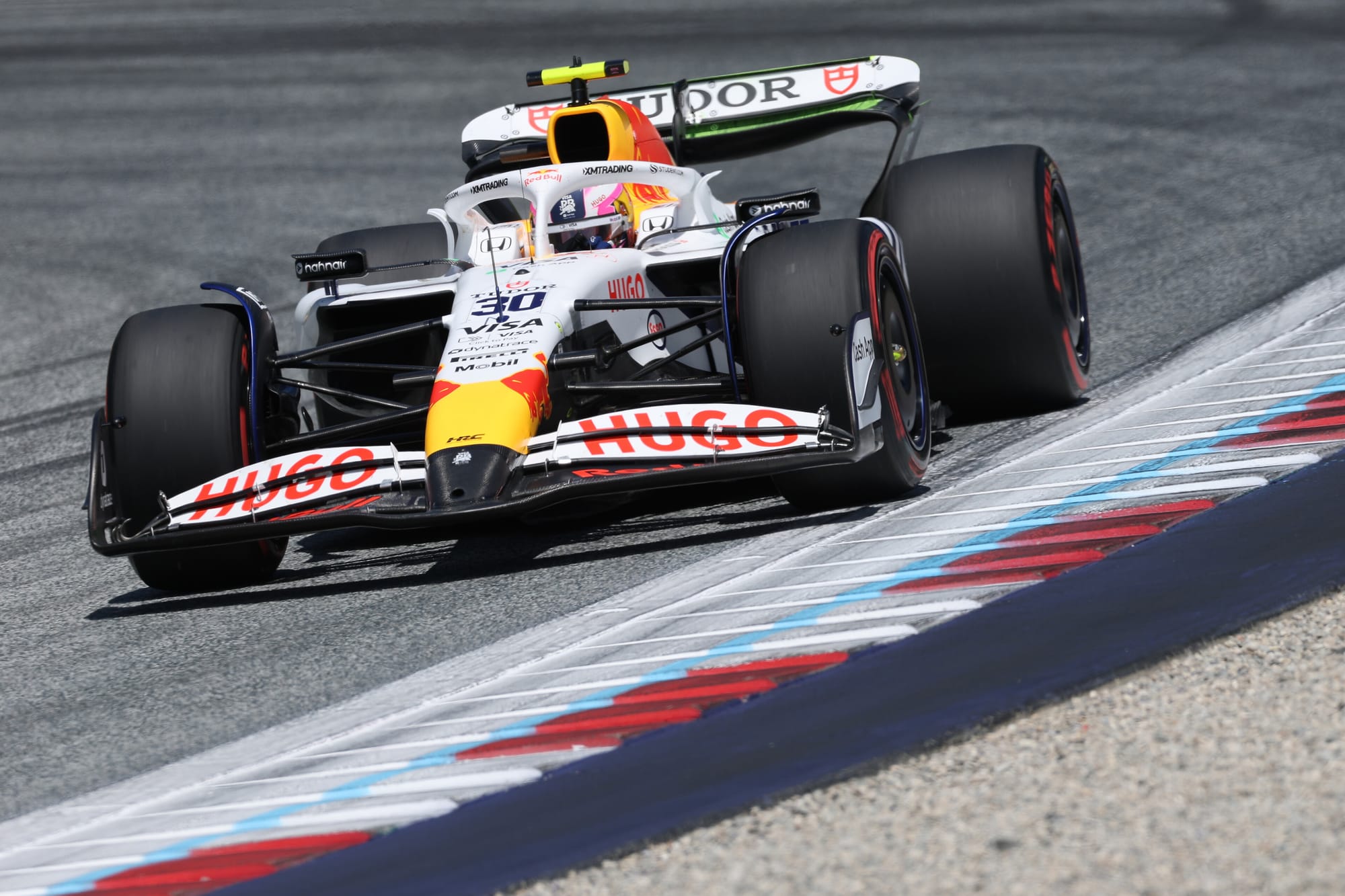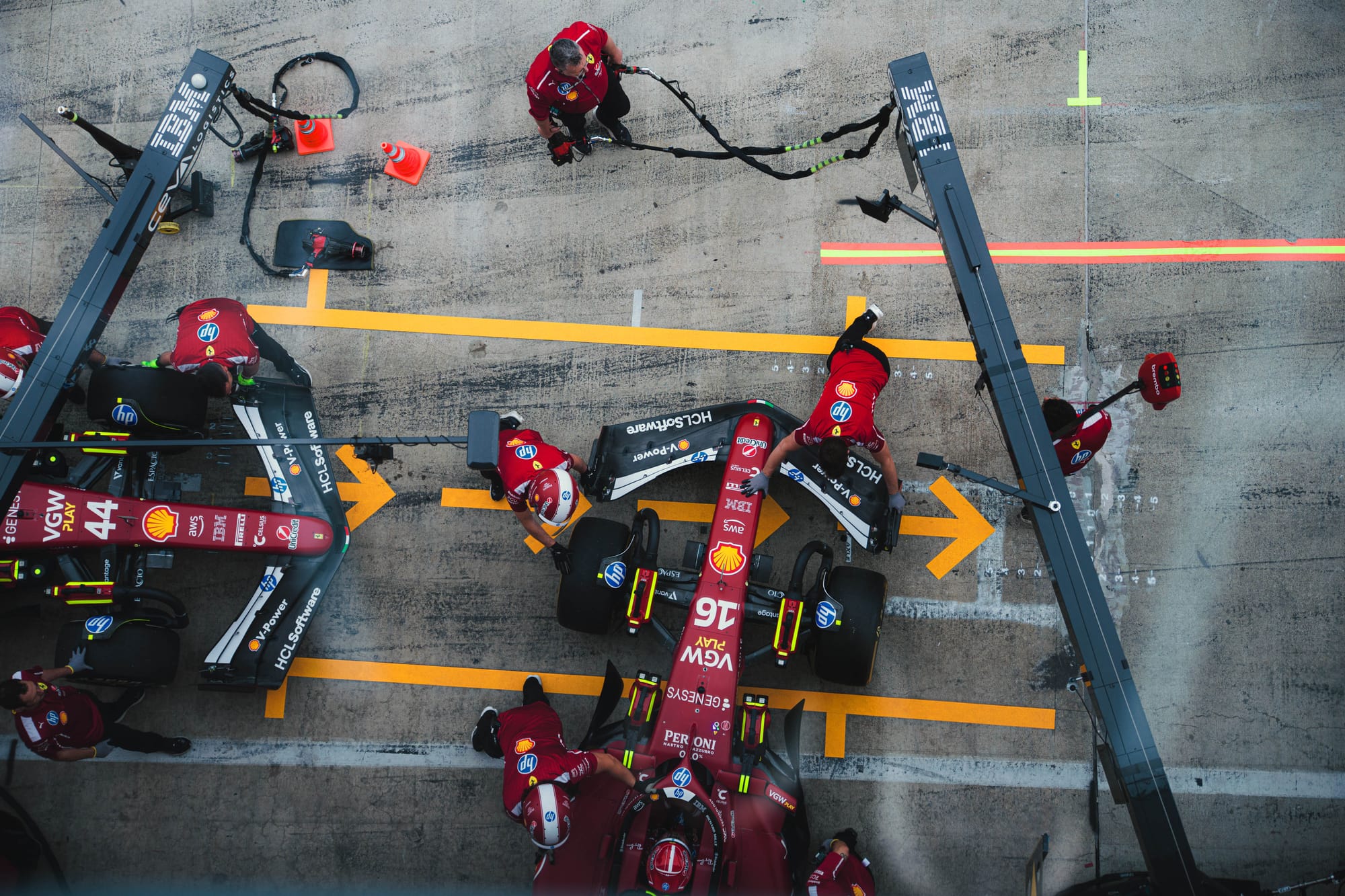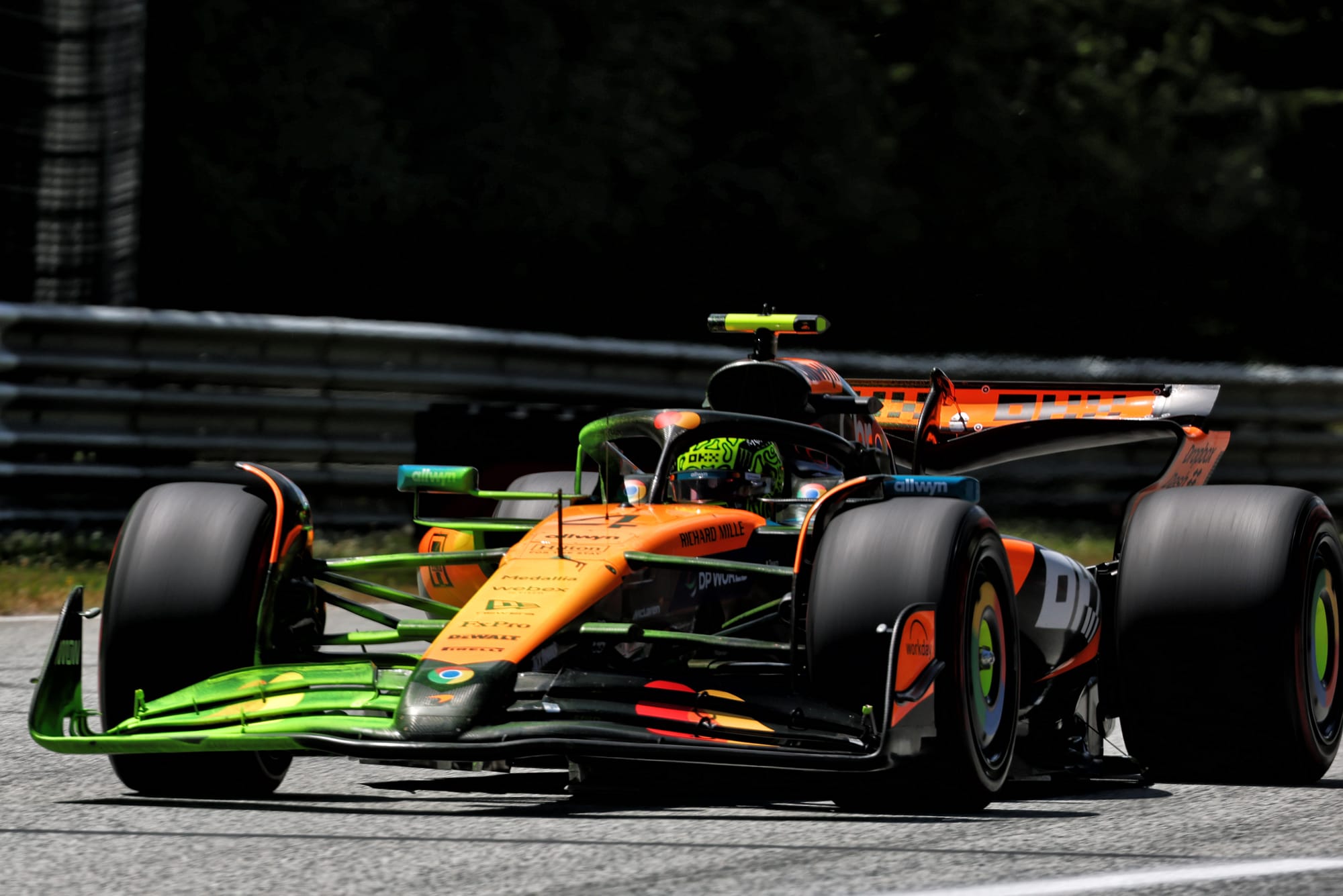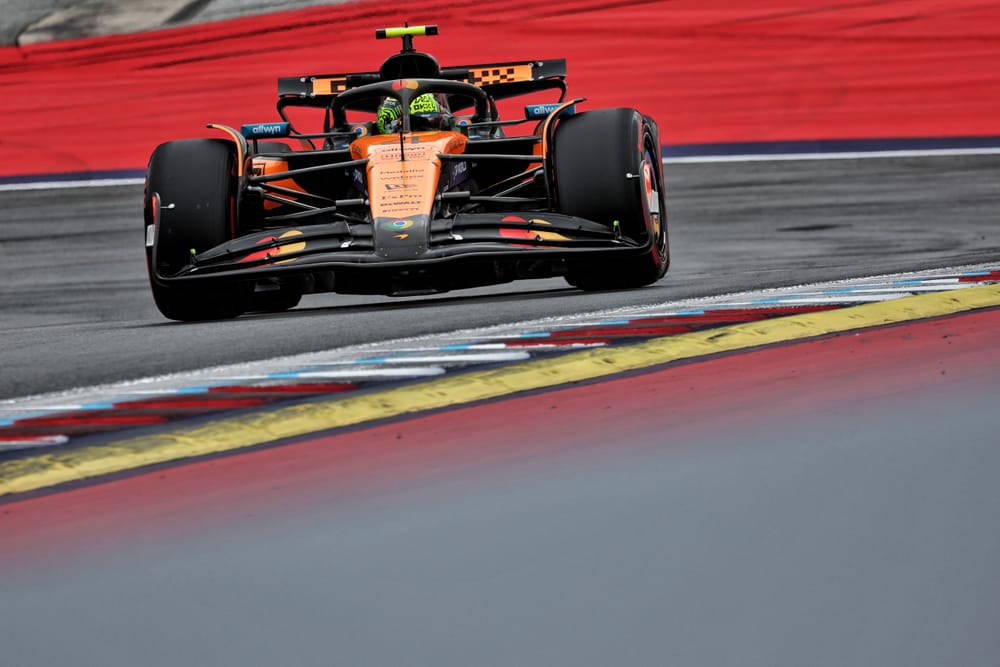Lando Norris said on Friday that he thought the others would catch up on Saturday, as per usual. He couldn't have been more wrong, as he took his McLaren to Austrian Grand Prix pole position by a resounding half-second margin.
Every other car was in and out of balance to wildly fluctuating extents according to track temperature and its effect on the C5 soft tyre - and this is a track where balance has greater authority than maybe any other on the calendar.
Track temperatures and Pirelli tyres always have a volatile effect on the competitive hierarchy. But at a place where balance trumps even downforce, the swings were spectacular as the form followed the temperature.

So at various phases of the weekend we've seen Racing Bulls, Aston Martin, Alpine and Sauber looking sometimes untypically good, other times not so. We've seen Williams fall drastically off form despite initially looking good. We've seen a Mercedes which was the outright fastest on the green track of FP1 on Friday but which has disappeared from view since. Just as it always suspected might be the case around a long-corner circuit such as this, one so much more demanding of the car's particular limitations than Montreal.
To a lesser extent this happened to Red Bull too. "When the temperatures came up, it took the car out of balance," explained team principal Christian Horner.
"As they came back down towards the end we were beginning to look better and I think Max was on for a P3 on the grid. His last lap was predicting at a 1m04.4s [which would have been second] but then he got the yellows for [Pierre] Gasly's spin and had to abort."
"It just all fell apart," said Verstappen. "There was no balance and the front and rear were both giving up at different points in the corner."
But even at its best, the Red Bull was not a McLaren match. The understeer through the long Turn 6-7 sequence cost it two-thirds of its laptime deficit to McLaren there. But even like that, it should really have been the next-best here. That it wasn't - with Verstappen way down in seventh behind Liam Lawson's overdelivering Racing Bull - was mostly circumstantial.
Yet despite Norris's huge advantage on such a short lap (the biggest percentage pole advantage anyone has had all year) McLaren did not lock out the front row. Oscar Piastri was denied his second Q3 lap because of the yellows for Gasly's spin. It meant the lap was over before it had even started.
His first Q3 time was good for third. But at no stage in the weekend was he on Norris's devastating pace.
The fundamental unsuitability of the Mercedes to the track - George Russell and Kimi Antonelli a respective fifth and ninth quickest - and the temporary unbalancing of the Red Bull at the crucial time ensured that the status of second-fastest car was wide open. So it was that Charles Leclerc - every bit as spectacularly good around this track as Norris - ensured that it was Ferrari which achieved that status.

At half-a-second off the pace, no one was getting too excited about that. That said, the all-new floor (canoe section, diffuser, floor edges and vanes, ie everything) represents a very serious update and all the signs are that it is working well. Maybe when it is combined with the new rear suspension, the Ferrari will be back to being the second-best car on a more secure footing. For now, its race prospects against McLaren really would hang on it being easier on the tyres and perhaps that giving it access to a special strategy.
Lewis Hamilton was fourth fastest, and close to at least matching Leclerc until the car's bugbear of rear locking around here (guaranteed to be exposed by Hamilton's late-braking style) cost him vital time.
The Ferrari at least had a balance and on this day that was enough to put it ahead of Verstappen and Mercedes. But the McLaren's balance was there at a much higher aerodynamic grip level.
Within that big picture, factor-in also how special a place this is for Norris. These long corners really work well for his combined braking/cornering technique - and here he felt the Montreal suspension tweak really was working for him, giving him access to his special stuff.

In addition, McLaren brought some pretty significant upgrades here. The front wing/suspension sheaths and brake ducts brought a quantifiable aero advantage and the new rear suspension geometry - designed to give stability in the high-speed entries - complemented that.
Typically this year the McLaren has been slower than the Red Bull in the high-speed sections. But here - even before Red Bull fell out of the window - it was quicker.
Could that be a game-changer for the remainder of the season? Has McLaren, with that upgrade, just transitioned from the best car to an unbeatable one? Or has the effect been enhanced by this track and how it lends itself to the Norris effect? Let's see at Silverstone next week.



